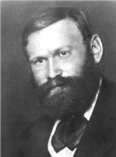 Erlang (E), a unit used for telephony sizing, is named after the Danish mathematician and engineer A.K. Erlang.
Erlang (E), a unit used for telephony sizing, is named after the Danish mathematician and engineer A.K. Erlang.
Erlang is the amount of traffic per hour (number of calls x average call duration).
So if you would have 40 calls per hour with an average duration of 3 minutes, that would give you 40 x 3 = 120 call minutes per hour = 2 hours of traffic per hour (120/60) = 2 Erlang.
For legacy telephony sizing you need to determine the number of phone lines, for VoIP and SIP Trunks that translates to the number of channels and bandwidth required.
To be able to determine the number of lines, you need to know the traffic during busy hour, and also how many callers are probably going to get blocked (get the busy signal). That is where Erlang B comes in.
The Erlang B algorithm looks at the amount of calls you get during busy hour (Busy Hour Traffic or BHT, in Erlang), and the percentage of blocked calls (Blocking Target). Busy Hour Traffic is calculated by taking the percentage of the total daily call minutes you get during busy hour. This percentage is known as Busy Hour Factor (BHF).
If you know BHT and Blocking Target you can calculate how many lines you need. Or if you know how many lines you have and your BHT you can calculate Blocking Target to see if that is within acceptable range.
Unless you have a reason to deviate, you can work with the industry defaults for Busy Hour Factor (17%) and Blocking Target (1%).
The calculations are usually handled by an Erlang calculator. There are multiple Erlang calculators available, the Lync Bandwidth Calculator contains an Erlang calculator worksheet.
With a Busy Hour Traffic of 2 Erlang you would need 7 Lines to get a Blocking Target of 1%.
Other versions of Erlang are Extended Erlang B (includes recall attempts) and Erlang C (includes queue prediction, helpful for call center sizing).
There is a lot more to say about Erlang: Wikipedia, Erlang.com